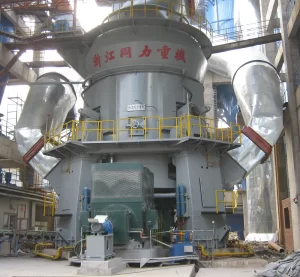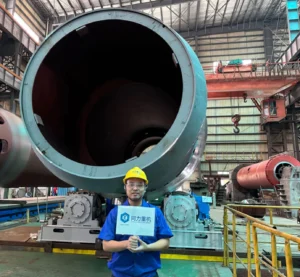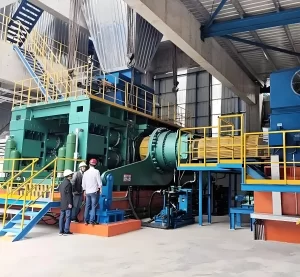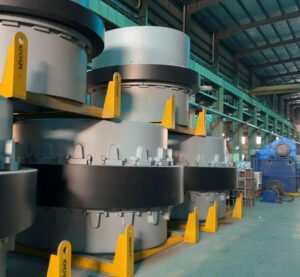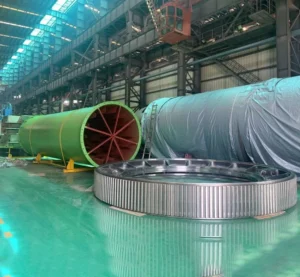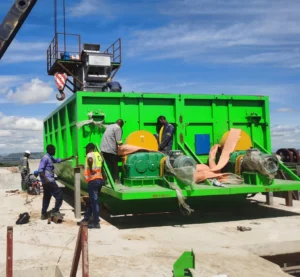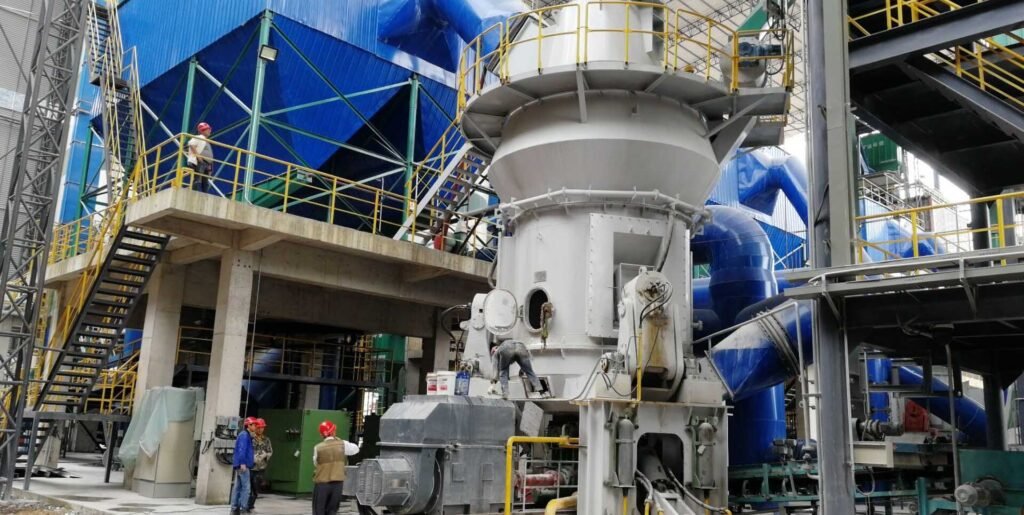
Cement additives are process or performance additives added during cement grinding. They have the functions of improving grinding conditions, reducing the production cost per ton of cement, and improving the quality of cement. They are widely used in the cement final grinding process with ball mill as the main production equipment, and are collectively referred to as "cement grinding aids". In foreign countries, cement additives have been widely used in production processes with ball mills or vertical roller mills as cement final grinding equipment; in my country, the application ratio of cement chemical additives in ball mill final grinding production lines is relatively high. However, the application of vertical mills as cement final grinding production equipment in China has only gradually started in the past 10 years or so, the number of production lines is small, and there are still some disputes in China about the application performance of vertical roller mill cement. Therefore, there are doubts about the feasibility of using cement chemical additives in vertical mills and their application methods. Based on this, this article intends to combine relevant domestic and foreign literature and technical research reports, based on the characteristics of vertical mill grinding process and the differences with ball mill grinding process, to make a brief analysis of the application status, technical points and future development direction of chemical additives in cement vertical mill final grinding production.
Why we want to disscuss about the additives application in vertical roller mill grinding process?
Because it is worth noting that in recent years, vertical roller mills have become the preferred equipment for cement industry grinding devices due to their unique advantages of low energy consumption and high hourly output of more than 300 t/h. They are widely used in raw material grinding, slag grinding, cement grinding and other processes. Vertical mills have been fully promoted and selected in the field of raw material grinding in the global cement industry since 1990, and gradually entered the field of cement final grinding after 2000. The proportion of vertical mills used in newly built cement final grinding production lines has increased from 15% to more than 70%. Therefore the importance of understanding additives used in this type of application is also important for cement plant owner. Before we move on to the application of cement additives firstly we need to understand how vertical roller mill works and then we can explain it better to you the application of additives.
Vertical mill grinding process characteristics
The grinding of the vertical milling machine is to squeeze the loose materials through the grinding rollers and grinding discs without direct contact, forming a material bed and transmitting the grinding pressure, gradually crushing and grinding the materials into powder. Compared with the traditional ball mill grinding process, there are significant differences in the movement path of the materials in the vertical mill, the grinding process and the sorting method.
The difference between the grinding process of materials in ball mills and vertical roller mills.
- First, the residence time of materials in the vertical mill is shorter: the residence time of materials in traditional ball mills is generally 15~20 minutes, while that of vertical mills is generally only 2~3 minutes.
- Second, there is basically no over-grinding of materials in the vertical mill: the residence time of materials in traditional ball mills is long, and the problem of over-grinding has always existed, and cement grinding aids are often used to improve it; while the residence time of materials in the vertical mill is short, and the use of wind-sweep grinding and its own powder selection function can bring out fine powder in time, avoiding over-grinding.
- Third, the vertical mill is not sensitive to wet materials. Since it uses gas to convey materials, it can grind and dry materials with a moisture content of 12%~15%, and there will be no problems such as ball wrapping and paste grinding caused by wet materials in ball mills.
Ball mill grinding mechanism working principle:
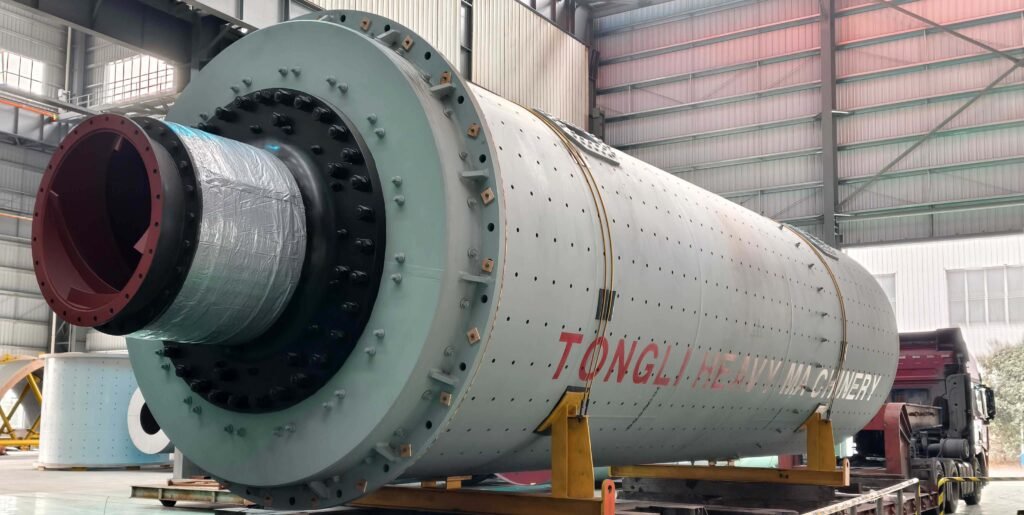
For traditional horizontal ball mills, the crushing and grinding of materials is achieved through the impact and grinding between the grinding media and the mill cylinder. After the fresh material enters the mill through the feed port, it is crushed and ground by the grinding media, and gradually moves to the end of the mill and out of the mill under the negative pressure of the mill tail. At the same time, the grinding process of materials in the ball mill is also a process of full mixing and stirring of materials. The movement route and speed of the material in the mill (that is, the material flow rate) determine the time for the interaction between the material and the grinding media in the mill, that is, the residence time in the mill. The residence time of materials in the ball mill is generally 15~20 minutes. The material properties, the filling rate and gradation of the grinding body, the addition of grinding aids, etc. will affect the flow rate of the material in the ball mill, and then affect its residence time and grinding efficiency
Vertical roller mill grinding mechanism working principle:
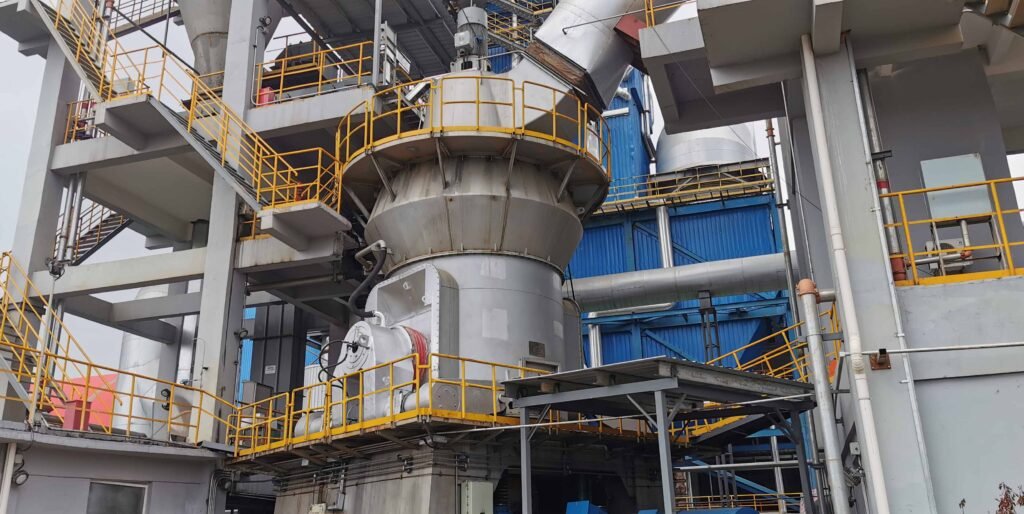
For vertical mills, the main grinding working parts are the grinding rollers and grinding discs that are not in direct contact. The crushing and grinding of materials are achieved by the grinding rollers and grinding discs squeezing the material bed. New feed material enters the mill through the feed port of the vertical mill and falls on the center of the grinding disc. Under the action of centrifugal force, it moves in a spiral manner along the radial direction of the grinding disc toward the edge of the grinding disc, and is then squeezed and sheared by the grinding roller to become smaller. Under the action of centrifugal force, the material that escapes from the edge of the grinding disc is blown up by the high-speed hot air flow passing through the nozzle ring, and the material is dried in a dispersed particle state. The coarse material falls into the air ring and is discharged to the bucket elevator by the rotating scraper and re-enters the mill. The fine powder enters the powder classifier for sorting, while the coarse particles re-enter the mill for grinding.
Movement path and conveying method of materials inside the vertical roller mill and how additives help in this process.
The movement path of materials inside the vertical mill mainly includes the grinding process on the surface of the grinding disc, pre-screening of hot air flow, and material conveying and sorting by the powder selector.
Material Movement and Grinding Dynamics on the Vertical Mill Disc
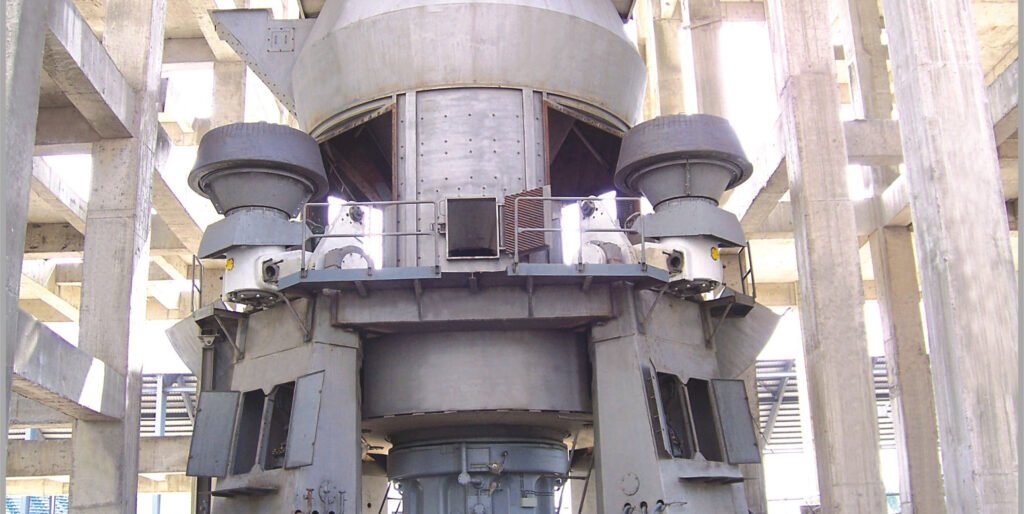
The grinding process of materials in the vertical mill is completed on the surface of the grinding disc, and the grinding disc plays the role of grinding machinery and spreading disc at the same time. The grinding disc disperses the new feed scattered on its center and transports it to the grinding roller; the material particles continue to slide toward the periphery of the grinding disc in a spiral manner under the centrifugal force of the grinding disc, and their movement speed is determined by the difference between the centrifugal force of the grinding disc and the friction between the material and the grinding disc. The magnitude of the centrifugal force of the grinding disc is controlled by the rotation speed of the grinding disc, while the friction between the material particles and the grinding disc depends more on the material properties such as water content, particle shape, etc. The addition of cement additives or mineral additives with higher sphericity has a greater impact on the friction. Therefore, the shape of the material layer in the vertical mill and its movement on the surface of the grinding disc depend on the shape of the grinding disc, the rotation speed, the amount of circulating material and the friction between the material particles and the grinding disc. The addition of chemical and mineral additives has a greater impact on the friction between particles and between the material layer and the grinding disc. In addition, the mixing and stirring of material particles on the surface of the grinding disc is limited, which is different from the ball mill. In this process, the flow rate of material particles has a greater impact on the grinding efficiency.
Pre-Screening and Powder Classification in the Vertical Mill System
The high-speed hot air flow rising from the nozzle ring performs gravity pre-screening on the grinding materials leaving the edge of the grinding disc after the grinding process. Large particles and unqualified coarse particles enter the mill again through the external circulation and internal circulation processes respectively, and the fine powder is transported to the powder separator by the hot air flow for sorting. The material leaving the edge of the grinding disc under the action of centrifugal force is composed of fine powder, coarse particles and large particles. The degree of powder dispersion under the hot air flow directly determines the bypass value of this process, that is, the efficiency of pre-screening. The dispersion of cement additives on the surface of powder materials helps to improve the efficiency of this pre-screening process. The degree of selection of qualified powder in the fine powder entering the powder classifier is also affected by the degree of powder dispersion.
So After we had an idea of how the vertical roller mill works and the material flow, then we can start to introduce the cement additives.
Application characteristics of cement additives in vertical roller mill grinding process
Uniformity of cement additives on the surface of materials in the mill
The uniformity of cement additives on the surface of materials in the mill has a great influence on the application effect. The grinding process of materials in the ball mill is also a process of fully mixing and stirring dry materials. Cement additives can use this process to achieve uniform mixing and surface dispersion with material particles in the mill. Unlike the ball mill, the materials enter the vertical mill and are spread on the surface of the grinding disc. There is a lack of effective stirring and mixing of the materials themselves. The mutual mixing and stirring of materials in the vertical mill grinding process is limited. In addition, the water content of the materials in the material bed is high, so it is difficult for traditional cement grinding aids to achieve uniform dispersion on the surface of the materials.
The influence of vertical mill ventilation on the application effect of cement additives
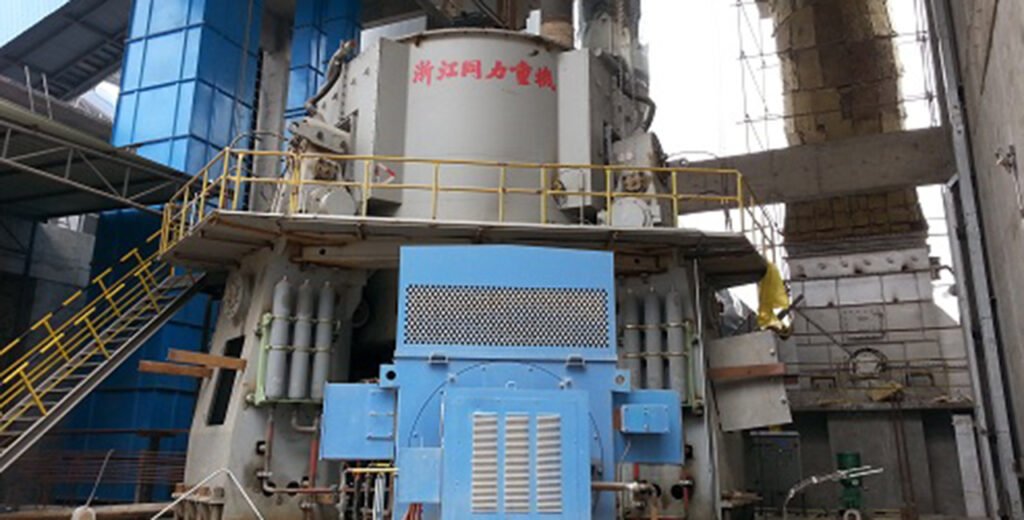
Another important difference is the influence of mill ventilation between vertical mills and ball mills on the application effect of cement additives. The main function of ventilation in ball mill is to achieve negative pressure in the mill to prevent dust from escaping, and at the same time, it also has the function of accelerating the flow of materials in the mill. The airflow entering the mill is generally at room temperature; while the ventilation in the vertical mill has multiple functions of hot air drying, separation and material transmission, and the ventilation volume and wind speed are much larger than those of traditional ball mills. The cement additives added to the surface of the material are easily "stripped" in the strong airflow, and the high-temperature gas will significantly accelerate the early evaporation of the organic components in the cement additives, which will increase the escape rate of the cement additives and affect their final application effect in the vertical mill grinding system.
The role of cement additives in ball mill grinding
In the ball milling process, the electrostatic effect between dry fine powders, powders and grinding bodies and the surface of the liner is strong, which leads to agglomeration, over-grinding and other phenomena. Most cement additives used in ball mills are mixtures of various polar compounds. The principle is to reduce the surface charge of cement powder to achieve dispersion of fine particles, thereby improving problems such as ball wrapping, liner and poor ventilation in the mill caused by electrostatic effects, as well as fine powder agglomeration and re-healing of cracks on the surface of particles. By improving the working conditions of the mill and improving the grinding efficiency, the purpose of increasing production, reducing energy consumption and improving cement quality can be achieved. Therefore, the main role of cement additives in ball mills is to reduce particle agglomeration, reduce ball paste, improve powder selection efficiency, and thus reduce the bypass volume of the powder selector.
The role of cement additives in vertical mill grinding
In the grinding process of the vertical mill, the grinding of materials is achieved by squeezing the material bed through the grinding roller and the grinding disc. Compared with the accelerated material movement speed caused by the addition of cement chemical additives, the stability of the material bed has a greater impact on the output and grinding efficiency of the vertical mill. At the same time, the gravity pre-screening effect of the hot air flow on the ground material and the powder selection efficiency of the powder classifier are determined by the dispersion of the powder, and the agglomeration between fine powders and the adsorption of fine powders on the surface of coarse particles and large particles affect the dispersion of powders in the air flow. Therefore, the main role of cement additives in the vertical mill is more based on the dispersion of polar compounds on fine material particles, improving the dispersion of ground powders in the hot air flow, reducing the bypass value, and thus improving the grinding efficiency.
How to correctly use cement additives in vertical mill grinding?
The location and method of adding cement additives in the vertical mill
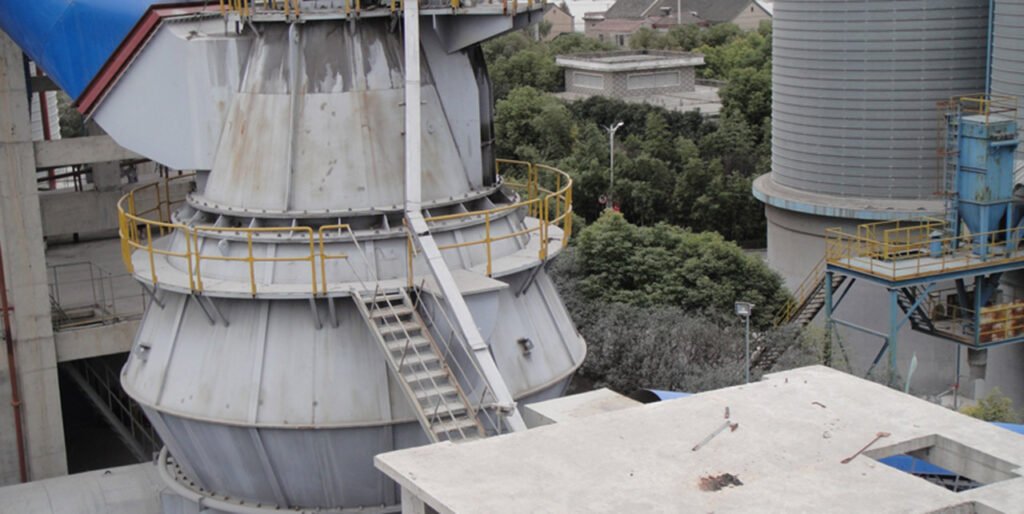
In the grinding process with ball mill as the main grinding equipment, cement additives are generally dripped on the materials entering the mill, and they will be fully mixed and evenly mixed after entering the mill. For the vertical mill grinding process, since the ventilation in the mill has the functions of drying materials and conveying, and the materials stay in the mill for a short time, adding the grinding aid directly to the surface of the fresh materials entering the mill will have a certain impact on the application effect. Through the self-made flat feeder, the grinding aid is evenly added to the vertical mill slag belt (external circulation belt), which improves the utilization efficiency of the grinding aid in grinding and the uniformity of the materials. Pietro Recchi of Mapei has developed a special grinding aid for vertical grinding systems. In addition to the classic components of ethanolamine, ethylene glycol and inorganic salts, a certain amount (3%~10%) of a special mixture of high-boiling-point compounds and thickeners is introduced into the formula to ensure that the grinding aid is not affected by the higher ventilation volume in the vertical mill. At the same time, an innovative grinding aid addition system is designed to connect the grinding aid delivery pipeline in parallel to the vertical mill water delivery pipeline, and force the grinding aid and water to be directly added to the bottom of the grinding roller. A comparative test was carried out in the Loesche LM56.3+3 cement vertical mill final grinding system of a cement plant in the Middle East. The type of cement ground was CEM I cement (92% clinker + 4% gypsum + 4% limestone), and the water injection volume was 2.1%. The test results are shown in the table below.
Effect table of adding cement grinding aid at different positions in vertical mill system
| Parameters | Blank Sample | Reference Sample with Additive Added on Conveyor Belt | Reference Sample with Additive Added on Grinding Disc |
| Mill Feed Rate/(t/h) | 173 | 175 | 190 |
| Additive Dosage/(g/t) | - | 250 | 250 |
| Total Energy Consumption/(kWh/t) | 32.0 | 30.1 | 29.5 |
| Average Vibration/(mm/s) | 2 - 4 | 2 - 4 | 2 - 4 |
| Specific Surface Area/(cm²/g) | 3487 | 3500 | 3507 |
| Residue on 45 μm Sieve/% | 8.0 | 7.9 | 7.8 |
| 2 d Compressive Strength/MPa | 25.4 | 25.6 | 26.6 |
| 7 d Compressive Strength/MPa | 37.0 | 38.1 | 38.7 |
| 28 d Compressive Strength/MPa | 46.1 | 46.3 | 47.6 |
In order to improve the 2-day compressive strength of cement, Hume Cement Company in Malaysia adopted enhanced grinding aid in its vertical mill final grinding system (model TRMK5021, design output: 175 t/h (OPC-320 m2/kg)). The addition position is sprayed on the raw material belt entering the mill. The actual application effect is shown in Table 2
| Project | Number of Samples/Unit | Mineral Composition/% | Surface Area/(m²/kg) | Flexural Strength/MPa | Compressive Strength/MPa | |||||
| C₃S | C₂S | C₃A | C₄AF | 1 d | 2 d | 1 d | 2 d | |||
| Reference Sample | 5 | 51.92 | 19.58 | 7.09 | 11.87 | 350 | 2.39 | 4.01 | 11.03 | 20.75 |
| Sample with Grinding Aid Added | 7 | 51.83 | 19.51 | 7.17 | 11.98 | 350 | 3.23 | 4.67 | 14.01 | 22.93 |
Effect of cement additives on the performance of the powder selection system and the particle size distribution of finished cement
Ball mill system
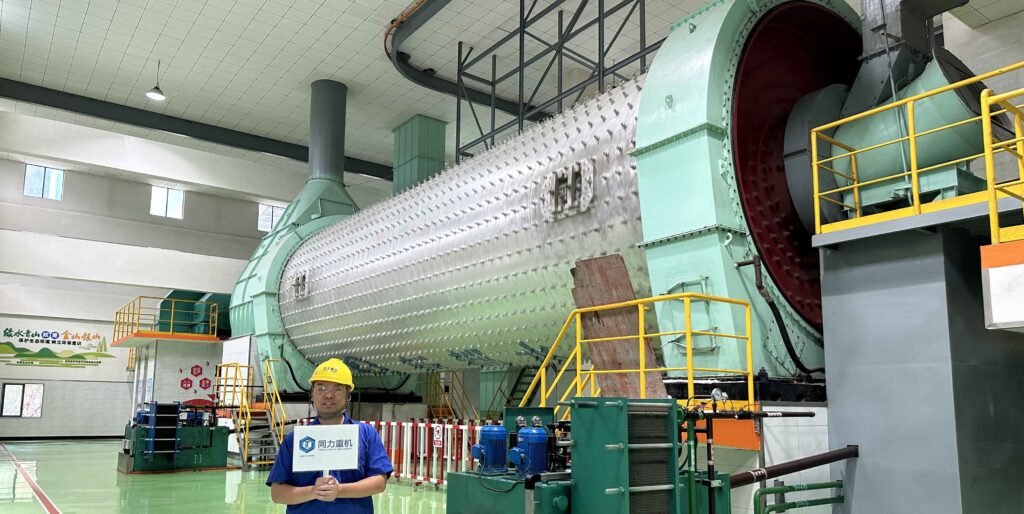
The powder selection equipment is an important part of the closed-circuit ball mill grinding system, which is related to the production efficiency and technical and economic indicators of the entire grinding system. The relevant process parameters include circulating load, powder selection efficiency, etc., but the performance and practical value can be better reflected by measuring the particle size composition of the finished product after sorting and the content of the finished product in the return material. The Tromp-Curve mainly looks at the degree of selection of a specific particle in the particle segment below 30 μm by the powder selection machine, that is, the bypass value; the smaller the bypass value, the higher the sorting efficiency and the more finished products, indicating that the powder selection machine has a reasonable structure of the material distribution plate and a good dispersion effect; generally, the return material is selected as the measurement object.
VRM system
Compared with the closed-circuit grinding system with ball mill as the main grinding equipment, the powder selection equipment of the vertical mill system is located inside the vertical mill structure, and only coarse return materials and finished products can be sampled. The addition of grinding aids significantly reduced the bypass value (from 15% of the blank sample to 9%), especially the degree of selection of fine particles <10 μm was significantly improved, reducing the circulation of finished materials in the mill. This shows that the addition of cement additives improves the agglomeration between fine powders and the adhesion on the surface of large particles, improves the dispersion of materials in the powder concentrator, and improves the sorting efficiency. The use of grinding aids significantly increases the proportion of powder in the strength contribution area in the particle size range of 3~32 μm, which helps to improve the performance of cement at all ages.
Optimization of grinding process parameters using additives
Ball mill system
Cement additives composed of various organic and inorganic surfactants enter the ball milling process, which will affect the properties of materials, especially fine powders, the interaction between materials and grinding media, and thus show certain differences in grinding conditions, such as faster material flow rate in the mill, coarser fineness, and increased circulating load of the classifier. Generally, they can be improved by adjusting process parameters such as steel ball (segment) grading, grinding body filling rate, mill ventilation, and classifier speed. After cement additives are applied to the vertical mill system, the relevant working parameters of the vertical mill also need to be optimized in combination with its process characteristics. The main purpose of applying cement additives in the final grinding process of the vertical mill is to increase the hourly output and cement strength, which is mainly controlled by the fineness and specific surface area of the cement out of the mill. The adjustment of its process parameters, especially the adjustment of ventilation volume, is particularly critical.
VRM system
The vertical mill adopts wind-swept grinding, and its air volume and wind speed directly affect the fineness and quality of the finished product. On the one hand, the wind speed controls the size of the large particles falling, and at the same time affects the circulation volume and material bed thickness, thereby affecting the grinding efficiency. When the wind ring area is determined, the wind speed is determined by the air volume. The ventilation of the vertical mill undertakes multiple functions such as material transportation, gravity screening and sorting, and its size is determined by the feed amount. If the ventilation volume is too small, a large amount of qualified cement in the mill cannot be removed in time, resulting in an increase in the internal circulation volume, an increase in the pressure difference in the mill, and vibration; while if the ventilation volume is too large, coarse particles will enter the powder concentrator and cause the fineness to be too coarse, resulting in the phenomenon of coarse cement out of the mill. After the vertical mill uses cement additives, the dispersion of the powder is improved, and it is generally necessary to appropriately reduce the air volume and adjust the wind speed.
Application cases of cement grinding aids in vertical mill grinding
Application Case 1: GCP Group Saint-Gobain
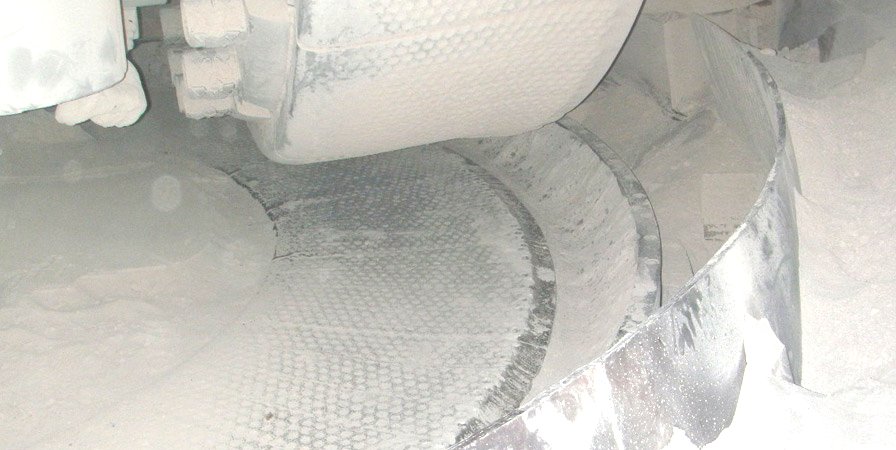
GCP has successfully used cement grinding aids specially developed for vertical mills in more than 50 vertical mills in Europe and the Middle East, and has been promoting them in China since 2016. Table 3 shows the results of production tests conducted by GCP on the vertical mill final grinding production lines of three domestic cement plants. The equipment parameters of the three plants are basically the same, with a grinding disc diameter of 4.3 m, a main motor power of 3150 kW, a designed output of 150 t/h (P·O42.5 cement), and grinding aids added by the front belt of the clinker feeder. According to the test results, after applying grinding aids, the operation of the mill is more stable, the vibration is reduced, and the power fluctuation of the main motor is smaller than when no grinding aids are used; the amount of water sprayed in the mill is reduced (Case A is reduced from 1.57% to 1.03%); after the production is increased, the mill power has an upward trend, the pressure difference increases, and the slag discharge volume increases slightly, but the vibration fluctuation of the mill is not large.
The application effect of GCP grinding aids in vertical mills of three domestic cement plants
| Project | Case A | Case B | Case C |
| Cement Type | P·C 32.5R | P·O 42.5 | P·O 42.5 |
| Grinding Aid Dosage /% | 0.03 | 0.03 | 0.03 |
| Clinker Ratio Reduction /% | 5 | 4 | 0 |
| Mill Production Increase Ratio /% | 8 - 10 | 3 - 4 | 5 - 8 |
| 3 d Compressive Strength Increase /MPa | 0.8 | 0.3 | 4.4 |
| 28 d Compressive Strength Increase /MPa | 2.9 | 5.5 | 10 |
Application Case 2: Mapei
Mapei applied grinding aids in a vertical mill cement final grinding system (LM 35 2+2). The test cement type was CEM Ⅲ/B 42.5 N (33% clinker, 2% gypsum, 65% slag, controlled specific surface area 4500 cm2/g). The grinding aids were directly sprayed on the material bed through the facility (model MA.G.A./VM 10, dosage 400 g/t). When applied in the background, the output increased by 12%, the energy consumption decreased by 9%, and the strength of each age increased to varying degrees.
Conclusion:
Compared with the ball mill final grinding system, the materials have different movement paths, conveying methods and sorting methods inside the vertical mill. There are also great differences in the residence time of the materials in the mill, the uniformity of the materials, the process adjustment methods, etc. The application of cement additives in the vertical mill final grinding system is feasible, but the addition position and method of cement additives must be optimized in combination with its process characteristics to ensure its uniformity in the grinding materials and minimize the early "peeling" of cement additives under high wind speed and large air volume. The application effect of cement additives in the vertical mill final grinding system is more to improve the powder dispersion degree and thus improve the powder selection efficiency and reduce the bypass value; cement additives can significantly improve the operating conditions and stability of the vertical mill, reduce mill vibration, reduce the power fluctuation of the main motor, and reduce the amount of water sprayed in the mill.
Cement additives are chemicals used to improve the grindability and/or performance of cement. They address several challenges in cement production.
As cement is ground, smaller particles have strong adhesion due to thermodynamic, physical, mechanical and chemical forces. Cement additives contain surfactants that adsorb on the surface of cement particles, neutralize surface charges and shield inter - particle attraction. This helps prevent particles from aggregating.
There is an optimal powder filling in the mill relative to the media volume for maximum grinding efficiency (when the material fills about 85% of the media voids). Additives can reduce agglomeration, lower the cohesion of dry powder and improve fluidity. So, the mill filling level and residence time decrease, and the void filling gets closer to the optimal level, thus improving grinding efficiency. But it's important not to over - reduce the void filling.
The separator operates by applying a force balance on individual particles. Finer particles (with higher surface - to - mass ratio) are collected as “fine product” by the separating air flow, while coarser particles (with higher mass - to - surface ratio) are collected as “coarse reflux” due to gravity and centrifugal force. Grinding aids increase separator efficiency. Lower bypass efficiency of fine particles and lower efficiency of coarse fractions mean less fine powder returns to the mill, reducing the negative impact on the overall fineness balance of the mill and improving overall grinding efficiency.
Yes. For vertical mills, cement additives help with dry dispersion, degassing in front of the grinding rolls (resulting in smoother operation with less vibration) and better dispersion in the nozzle ring and separator, reducing fine powder in the grinding bed on the grinding table. For roller presses, better feed degassing improves the flow of feed material into the press, leading to better roller suction between feed bins, less vibration, higher stability and higher feed rates.
Frequently asked question people also ask about cement additives AID in Grinding
Q: What are grinding aids and how do they improve cement mill efficiency?
Grinding aids are a type of chemical additive used in cement grinding. Their core function is to optimize grinding efficiency and improve cement performance. From the perspective of the mechanism of action, when cement is ground, fine particles tend to agglomerate due to surface forces. The surfactant components in the additives (such as amines and polyols) will be adsorbed on the surface of the particles, neutralizing the charge, weakening the adsorption force between particles, and making the particles more evenly dispersed. Taking a ball mill as an example, after adding 0.03% of conventional additives, the mill's output per hour increased by 5% - 8%, and the unit power consumption decreased by 3 - 5kWh/t; from a process perspective, additives can optimize the fluidity of materials in the mill, reduce the "paste grinding" phenomenon, and make the grinding media work more effectively.
Q: Types of grinding aids used in VRM vs. ball mill
- Additives for vertical mill (VRM): Because vertical mill is a material bed powder grinding, it has high requirements for material fluidity and degassing, and additives mostly focus on the "dispersion + degassing" function. Common additives are additives containing polyethers and siloxane modified ingredients. This type of additive can quickly disperse the material on the grinding disc and nozzle ring, reducing the agglomeration and clogging of fine powder. For example, a vertical mill production line uses polyether-based additives. When the addition amount is 0.025%, the vibration value in the mill is reduced from 4.5mm/s to 3.2mm/s, and the hourly output is increased by 4%.
- Additives for ball mill: Ball mills rely on medium impact grinding, and additives are more concerned with "grinding aid + anti-agglomeration". Alcoholamines (triethanolamine, triisopropanolamine) are classic types, and polyols (such as propylene glycol) are also compounded. Triethanolamine can enhance the crushing effect of the medium on the material. In one case, after adding 0.03% triethanolamine compound additives, the ball mill 45μm sieve residue dropped from 10% to 7.5%, and the specific surface area increased by 20-30cm²/g. The difference between the two is due to the grinding principle: the vertical mill relies on the stability of the material bed, and the additives assist the laminar flow of the material; the ball mill relies on the impact of the medium, and the additives focus on optimizing the force field between particles and strengthening the crushing effect.
Q: Energy savings and performance gains using grinding aids
In terms of energy saving and production increase, grinding additives have significant effects. According to industry statistics, the reasonable addition of additives (dosage 0.02% - 0.05%) can reduce the power consumption of the ball mill system by 5% - 12%, and increase the hourly output by 3% - 10%; the vertical mill has a slower reduction in power consumption (3% - 8%) due to its own low energy consumption, but the hourly output increase is more prominent (in some cases up to 5% - 15%). After the ball mill is added with triisopropanolamine compound additives, the power consumption per ton of cement is reduced from 38kWh to 34kWh, and the monthly output increases by more than 2000t. In terms of performance gain, additives can optimize the cement particle grading, make the fine powder more uniform, and increase the 28d compressive strength by 1 - 5MPa (different cement varieties and additive types vary). For example, slag cement uses specific additives, and the 7d strength increase is up to 10%.
Q: Effects of additives on separator/classifier performance and bypass reduction
Additives improve the dispersibility of cement particles, and fine particles in the powder classifier are more easily captured by the airflow, reducing "coarse run" or "overfine entrainment". After adding additives, the separation efficiency of the powder classifier can be increased by 5% - 10%. For example, the original efficiency of the O-Sepa powder classifier is 65%, and it reaches 72% after adding additives. "Bypass" refers to fine powder that is discharged without effective grinding. Additives optimize particle agglomeration, allowing materials to be ground more fully in the mill, and the proportion of bypass fine powder can be reduced by 3% - 6%. After use, the proportion of bypass fine powder (≤32μm but substandard fine powder) dropped from 12% to 8%, the qualified rate of finished product fineness at the powder classifier outlet increased, and the mill load became more stable
Q: Additive impacts on cement powder flow, dust and silo behavior
Additives reduce the adhesion between particles, and the angle of repose of powder can be reduced by 3° - 5° (from about 35° to 30° - 32°). After adding fluidity additives, the unloading speed of cement silo increases by 20%, reducing the risk of "arching" in the silo. In terms of dust control, powders with good dispersion are not easy to raise dust, and the dust concentration in the workshop can be reduced by 10% - 20% (from 8mg/m³ to 6 - 7mg/m³). For silos, additives reduce powder agglomeration, the compaction density of materials in the silo is more uniform, and the pressure fluctuation during unloading is reduced. However, it should be noted that excessive pursuit of fluidity may make the powder "too slippery" and affect the packaging accuracy. A cement plant once had a packaging machine bagging error from ±0.5kg to ±0.8kg due to additive adaptability problems. The problem was solved by adjusting the additive formula later, indicating that the effect of additives on powder flow needs to balance the "good flow - controllable" relationship.
Q: Comparing ball mill + roller press (combi circuit) vs VRM grinding additives
- Ball mill + roller press (combined process): additives focus on "cooperative crushing + anti-agglomeration". The roller press first pre-crushes the material, and additives can optimize the porosity of the roller press cake (in one case, the porosity of the cake increased from 35% to 40% after adding additives), making the subsequent ball mill grinding more efficient; the additives in the ball mill section strengthen fine grinding, and the overall system power consumption can be reduced by 8% - 15%, but because it is a dual device, the additives need to adapt to two grinding mechanisms, and the formula is more complicated.
- Vertical mill (VRM): additives focus on "material bed stability + degassing and dispersion", allowing the vertical mill to maintain low vibration (vibration value ≤ 4mm/s) at high output (such as 300t/h unit). In contrast, combined process additives focus more on "relay" grinding optimization, and vertical mill additives focus on "single equipment full process" adaptation. In terms of energy consumption, the vertical mill itself has low energy consumption (unit power consumption is 25-35kWh/t), and the energy saving space of additives is 3%-8%; the original power consumption of the combined process is 40-50kWh/t, and the energy saving of additives is 8%-15%. Each has its own advantages, and the selection depends on the production line configuration and the demand for cement varieties (for example, the strength gain of slag cement using combined process + targeted additives is more obvious).
Q: Additive effects on cement quality: setting time, strength, false set
- Setting time: Amine additives (such as triethanolamine) often shorten the initial setting time by 10-30min due to accelerated C₃A hydration; some polyol additives have little effect on the setting time (fluctuation ≤5min). A certain fast-hardening cement uses triethanolamine additives, and the initial setting time is shortened from 180min to 160min, meeting the needs of fast construction of the project.
- Strength: The additive optimizes the particle grading, and the 28d compressive strength is increased by 1-5MPa (the strength of slag cement is more significantly increased by 5-8MPa due to vitreous activation). For example, for cement with 50% slag, the strength increases from 25MPa to 28MPa after adding additives in 7d, and from 45MPa to 50MPa in 28d.
- False setting: Poor quality additives or improper formulations may cause false setting (the material sets in a short time and then loses workability). A cement plant once had a problem of false setting of cement 1 hour after leaving the mill due to excessive early strength components in the additives. The problem was solved by adjusting the proportion of amine in the additives (from 15% to 10%). This shows that the additives need to be accurately adapted to the mineral composition of cement to balance the relationship between early strength and stable setting.
Q: Risks and side effects: concrete discoloration, rebar corrosion, health/safety
- Concrete discoloration: When the additive contains excessive organic dyes and impurities, the concrete may turn yellow/black. A project used cement containing inferior dispersants, and yellow spots appeared on the concrete surface. After testing, it was found that the unreacted aromatic components in the additive migrated, and the problem was solved by replacing it with purified additives.
- Steel bar corrosion: If the additive contains chloride ions (≤0.01% is the safety threshold), nitrites, etc., it may accelerate the corrosion of steel bars. Laboratory simulation shows that when the chloride ion exceeds 0.02%, the corrosion rate of steel bars increases by 3 times. Regular additives will strictly control harmful ions, but inferior additives from small factories are prone to exceeding the standard.
- Health and safety: Additives often contain volatile organic compounds (such as alcohol amine vapor), and long-term exposure may irritate the respiratory tract (when the concentration in the workshop exceeds 10mg/m³, workers are prone to coughing). Operations must be standardized: wear a gas mask, maintain ventilation, store away from fire sources (some additives have low flash points, such as propylene glycol, which has a flash point of 107°C and needs to be protected from high temperatures), select compliant additives from the source, and take good protection to reduce risks.
Q: Best practices: dosing methods, lab testing and quality control
- Feeding method: divided into "continuous metering" and "batch addition". Continuous metering uses a loss-in-weight scale to accurately control the dosage (error ≤ 0.001%), which is suitable for large-scale production lines; batch addition is based on the batch size of the mill, manually/automatically added, and is commonly used in small production lines. A daily production line of 10,000 tons uses continuous metering, and the dosage of additives is stable at 0.035%, and the hourly output fluctuation is ≤1%.
- Laboratory testing: "Grinding aid effect (specific surface area, sieve residue)" and "performance impact (setting time, strength)" need to be measured. Small grinding tests are performed 3 times a week to verify the adaptability of additives under different clinker/mixed material ratios; X-ray diffraction (XRD) is used to detect the hydration degree of cement minerals to ensure that the additives do not interfere with hydration.
- Quality control: Select qualified additive manufacturers from the source, and measure the density and solid content of each batch of additives before they enter the factory (solid content fluctuation ≤ 2%). In the production line, measure the grinder current and powder selector pressure every 2 hours to correlate the additive effect. When the current rises abnormally (exceeds the rated value by 5%), check whether the additives are agglomerated, forming a closed loop of "factory inspection - process monitoring - finished product verification" to ensure the stable effect of the additives.
Q: Latest innovations in grinding aids, including polymer‑based and proprietary blends
- Polymer-based additives: polyacrylates, polycarboxylic acid derivatives, etc., which have better dispersibility (a polycarboxylic acid-based additive can reduce the Zeta potential of cement particles from -15mV to -30mV), and can also increase the specific surface area by 15-20cm²/g at a low dosage (0.02%). They are also biodegradable and in line with environmental protection trends.
- proprietary blends: manufacturers compound nano-silica with alcohol amines, using the "micro-grinding" effect of nanoparticles to assist in medium crushing. A certain compound additive can increase the output of the ball mill by an additional 3% per hour and increase the 28d strength by 1MPa. There are also customized additives for low-grade limestone, which can maintain strength at a dosage of 50% by activating the activity of limestone, expanding the application boundaries of raw materials. These innovations have enabled additives to move from "general improvement" to "precision customization" to meet different production lines, raw materials, and quality requirements.
So this article is already very long so we just gonna stop here and see you next time!

